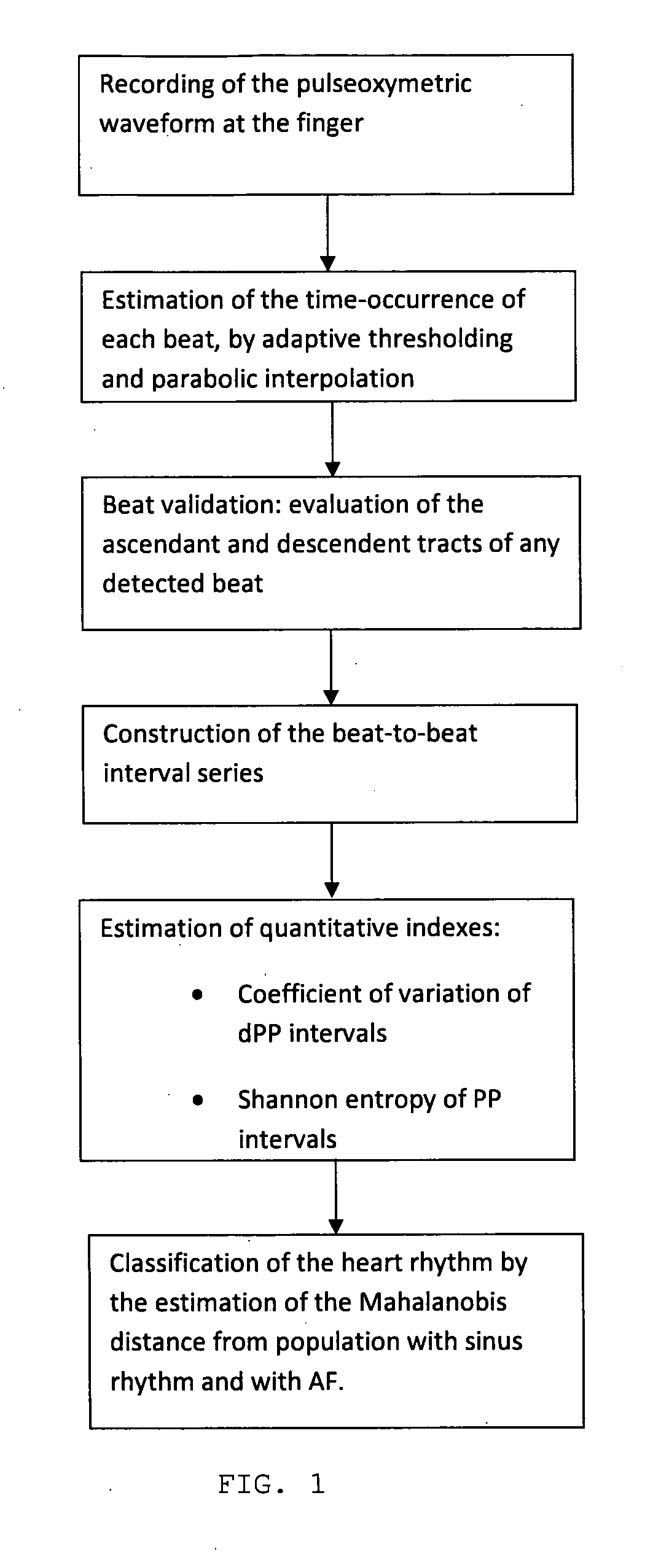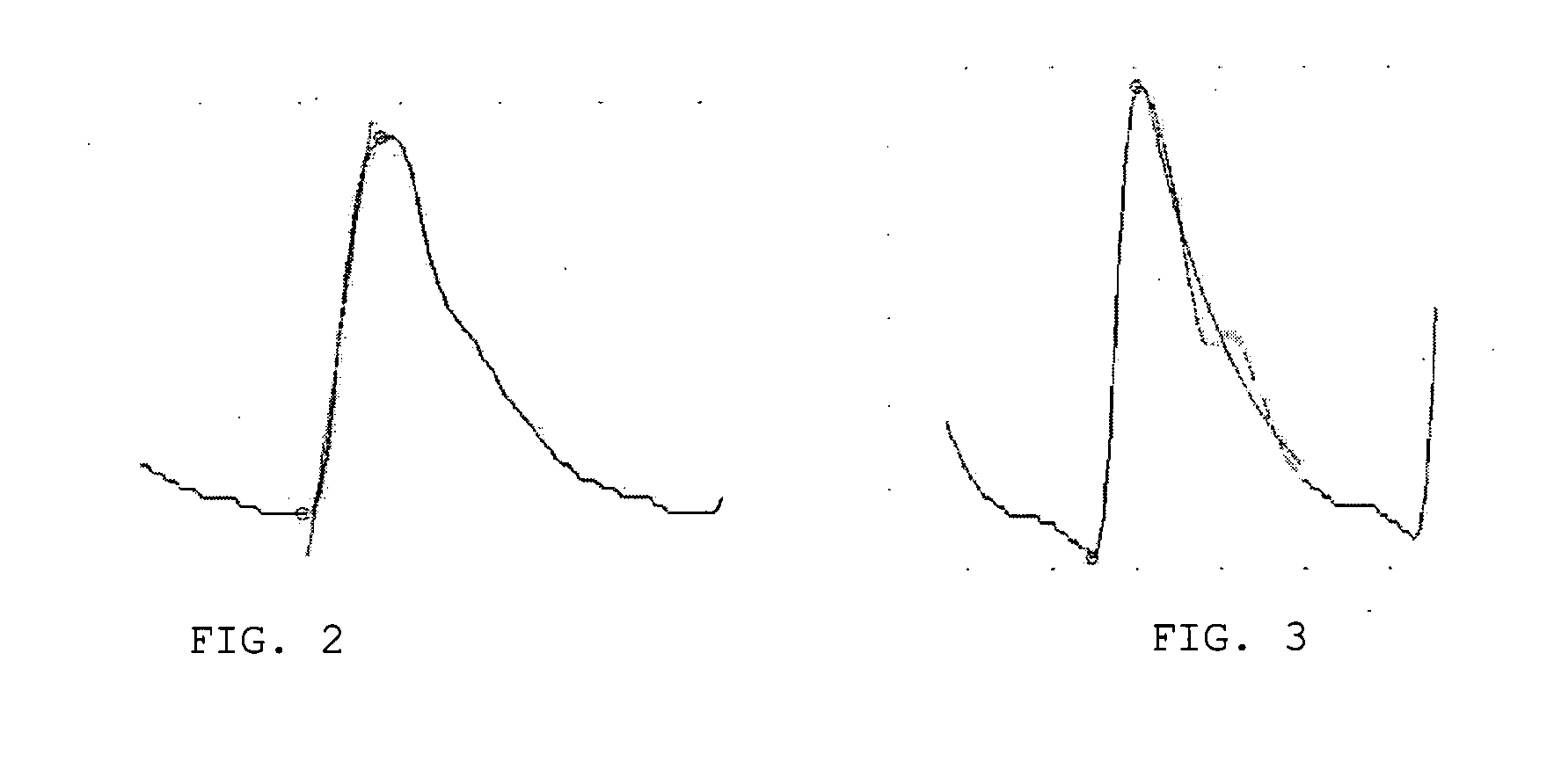Portable pulseoximeter for a direct and immediate automated evaluation of the cardiac rhythm (regularity) and related method
a pulseoximeter and automatic evaluation technology, applied in the field of portable pulseoximeters, can solve the problems of difficult choice, high morbidity and mortality, and most life-threatening consequences of atrial fibrillation, and achieve the effects of reducing the risk of strok
- Summary
- Abstract
- Description
- Claims
- Application Information
AI Technical Summary
Benefits of technology
Problems solved by technology
Method used
Image
Examples
Embodiment Construction
[0028]The method for the detection of AF episode is based on the estimation of the heart rhythm irregularity, specifically on two indexes extracted from the beat-to-beat interval series obtained from pulsoximetric waveform.
[0029]The method foresees the following steps:[0030]Acquisition of the pulseoximetric signal / waveform from the finger.[0031]Estimation of the time-occurrence of each beat from the pulseoximetric waveform.[0032]Construction of the beat-to-beat series.[0033]Beat validation to reduce artifacts[0034]Characterization of pulseoximetric waveform, by morphological analysis of the ascendent and descendent tracts of a single pulse[0035]Removal of beat intervals with values lower than 0.3 s and longer than 1.5 s[0036]Estimation of quantitative indexes[0037]Coefficient of variation of the first differences of beat-to-beat interval series[0038]Shannon entropy of the beat-to-beat interval series[0039]Classification of the heart rhythm:[0040]Estimation of the Mahalanobis distanc...
PUM
 Login to View More
Login to View More Abstract
Description
Claims
Application Information
 Login to View More
Login to View More - R&D
- Intellectual Property
- Life Sciences
- Materials
- Tech Scout
- Unparalleled Data Quality
- Higher Quality Content
- 60% Fewer Hallucinations
Browse by: Latest US Patents, China's latest patents, Technical Efficacy Thesaurus, Application Domain, Technology Topic, Popular Technical Reports.
© 2025 PatSnap. All rights reserved.Legal|Privacy policy|Modern Slavery Act Transparency Statement|Sitemap|About US| Contact US: help@patsnap.com



